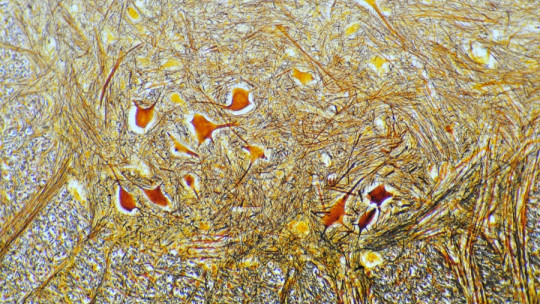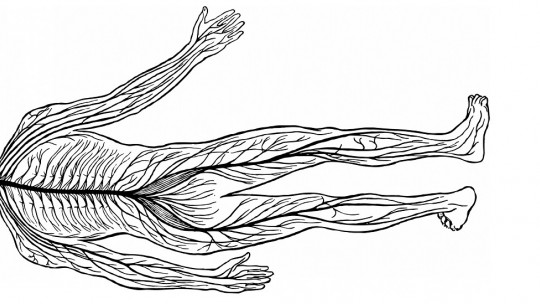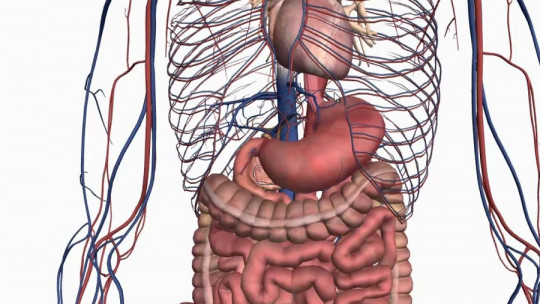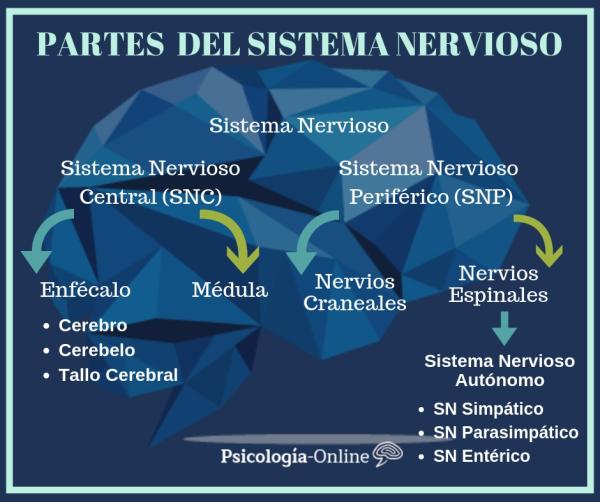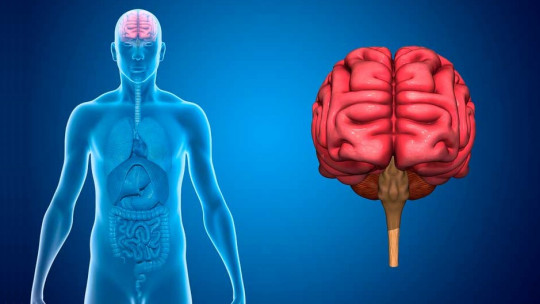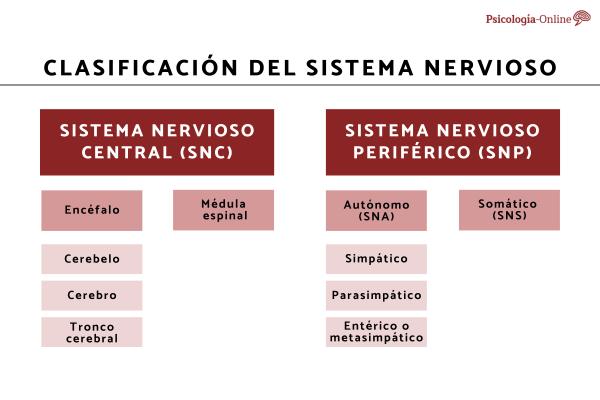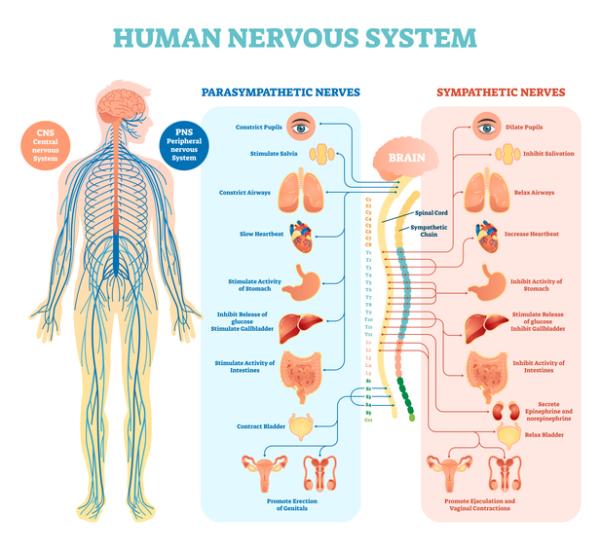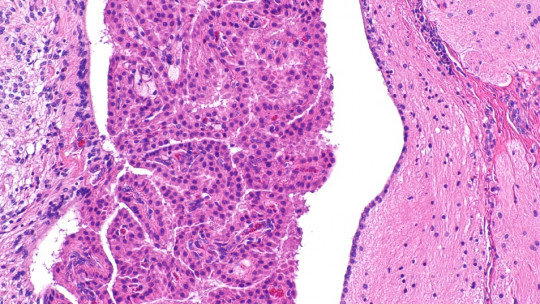Did you know that our brain is closely linked to the intestine thanks to the enteric nervous system ? The enteric nervous system, along with the sympathetic and parasympathetic nervous systems, constitute the autonomic nervous system. The magnitude and complexity of the enteric nervous system is immense and contains as many neurons as the spinal cord.
The main components of the enteric nervous system are two networks or plexuses of neurons, the myenteric plexus and the submucosal plexus. In this PsychologyFor article we explain the enteric nervous system and emotions
What is the enteric nervous system: the second brain
The nervous system exerts a profound influence on all digestive processes , such as motility, ion transport associated with secretion and absorption, and gastrointestinal blood flow. Part of this control is produced by the connections between the digestive system and the central nervous system, but the digestive system is also equipped with its own local nervous system called the enteric nervous system.
The “gut-brain connection” , also known as the “gut-brain relationship,” may sound like something very strange, but it is not. In fact, most of us refer to this (concept) without knowing it. For example, when you are under stress, do you eat more than normal or experience signs of indigestion?
How does the enteric nervous system work?
Sometimes when we get stressed we experience gastric cramps, as well as intestinal cramps. This is because our gastrointestinal tract is innervated with many nerves (specifically 200-600 million neurons), running from the esophagus to the anus. This system is called the enteric nervous system and is the reason why our intestine is often referred to as the second brain
This second brain is sensitive to emotions that threaten our life, that is, to the fight or flight response, and the signals they capture will be sent to the other nervous network in our intestine, the central nervous system, to execute a response, such as the activation of the defecation centers (which translates into going to the bathroom more times) or the alteration of the production of gastric juice through signals sent to the stomach.
In addition to reacting to our emotions, we need this enteric nervous system as it ensures good blood flow to the intestine and proper digestion of food.

Physiology and components of the enteric nervous system
The enteric nervous system is made up mainly of two plexuses which are embedded in the wall of the digestive tract and extend from the esophagus to the anus:
- The myenteric plexus It is situated between the longitudinal and circular layers of the tunica muscularis muscle and appropriately exerts control over the motility of the digestive tract.
- The submucosal plexus , which as its name indicates, is buried in the submucosa. Its main function is to sense the environment within the lumen, regulate gastrointestinal blood flow, and control epithelial cell function. In regions where these functions are minimal, such as the esophagus, the submucosal plexus is sparse and may be missing in sections.
In addition to the two major enteric nerve plexuses, there are minor plexuses beneath the serosa, within the circular smooth muscle, and in the mucosa.
Within the enteric plexuses There are three types of neurons, most of which are multipolar:
- sensory neurons They receive information from sensory receptors in the mucosa and muscle. At least five different sensory receptors have been identified in the mucosa, which respond to mechanical, thermal, osmotic and chemical stimuli. Chemoreceptors sensitive to acids, glucose and amino acids have been demonstrated, which, in essence, allow the “tasting” of light contents. Sensory receptors in the muscle respond to stretch and tension. Collectively, enteric sensory neurons collect a comprehensive battery of information about intestinal contents and the state of the gastrointestinal wall.
- motor neurons Within the enteric plexus they control gastrointestinal motility and secretion, and possibly absorption. In performing these functions, motor neurons act directly on a large number of effector cells, including smooth muscle, secretory cells (principal, parietal, mucosal, enterocyte, pancreatic exocrine) and gastrointestinal endocrine cells.
- The internal neurons They are largely responsible for integrating information from sensory neurons and providing it to enteric motor (“programming”) neurons.
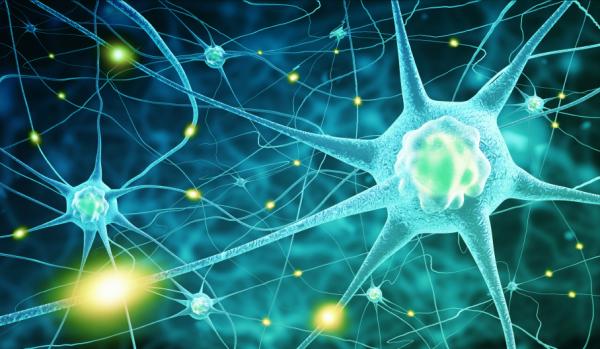
Relationship between emotions and the enteric nervous system
Another lifestyle example to illustrate this gut-brain relationship would be the role of serotonin and how serotonin levels in our body can affect our mood and sleep. Serotonin is a neurotransmitter produced by our brain and the gastrointestinal tract, the latter being the largest producer of serotonin. The relationship between neurotransmitters and emotions is very close, so, in this case, we can observe a direct relationship between emotions and the enteric nervous system.
Approximately the 80-90% of serotonin of our body is produced in our gastrointestinal tract.
Low levels of serotonin have been found in people with depression, and it’s no wonder serotonin has been called the “feel-good hormone.” Additionally, our brain uses serotonin to produce melatonin, a hormone essential to helping us sleep. Therefore, the amount of serotonin your body produces would have a direct impact on the quality and quantity of your sleep.
The intestinal microbiome and our emotional and mental health
Not many people know this, but the population of our gut bacteria has an impact on our emotional and mental health, as well as our ability to sleep at night. A study of 40 healthy women found that women with a higher percentage of the Prevotella species of bacteria in their stool were more likely to experience negative emotions after being shown negative images compared to women in than the highest percentage of the Bacteroides bacteria species in their feces.
Additionally, individuals with autism appear to be more susceptible to gastrointestinal problems such as inflammatory bowel disease and leaky gut, and this could be due to altered microbial composition of the gut. However, when this group of individuals were given a certain probiotic strain, this resulted in an improvement in the integrity of the intestinal barrier, as well as a reduction in behaviors characteristically related to autism.
Finally, there is a close relationship between our intestinal bacteria and sleep The bacteria in our gut help in the production of serotonin (which then goes on to form melatonin), but did you know that our gut microbial population can be affected by lack of sleep or poor quality sleep? This means there is a vicious cycle of sleep deprivation, poor sleep quality, and poor gut health. If you want to know more information about these curious data, you can consult the MetaHIT project by Francisco Guarner.
This article is merely informative, at PsychologyFor we do not have the power to make a diagnosis or recommend a treatment. We invite you to go to a psychologist to treat your particular case.
If you want to read more articles similar to The enteric nervous system and its physiology we recommend that you enter our Neurosciences category.
Bibliography
- Quevedo, MT THE BRAIN-GUT AXIS AND ITS RELATIONSHIP WITH STRESS.
- Qin, J., Li, R., Raes, J., Arumugam, M., Burgdorf, KS, Manichanh, C., … & Mende, D.R. (2010). A human gut microbial gene catalog established by metagenomic sequencing. nature, 464(7285), 59.

